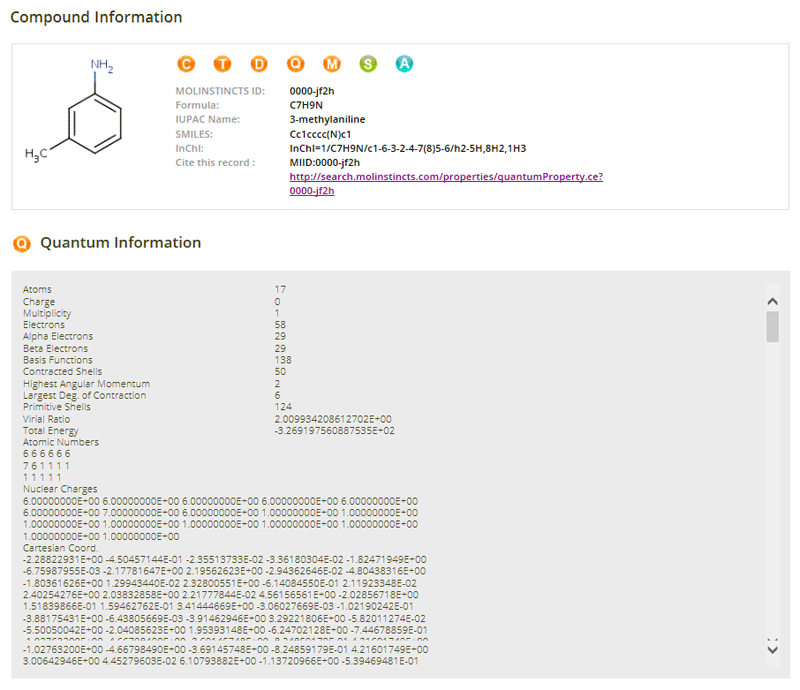MOLINSTINCTS Product Summary
Mol-Instincts is…
Compounds Available:
More than 2.5 million compounds including:
- Hydrocarbons, hetero-compounds (including atoms other than C and H), free radicals, and drug-like compounds
- Compounds included in fuels such as gasoline, jet-fuel, diesel, and biodiesel
- Compounds included in chemical processes such as thermal cracking, catalytic cracking, hydrocracking, desulfurization, isomerization,
catalytic reforming, combustion, gas-to-liquid (GTL), coal-to-liquid (CTL), and methanol-to-olefin/gasoline (MTO/MTG)
Limitation: The maximum number of carbon atoms currently up to 57 (mostly to 25). Pure compounds with C, H, N, O, and S atoms only.
Property Data & Molecular Information Available:
More than 10 billion sets of data and information including:
- Compound Identification information, e.g., 2D structure, formula, IUPAC name, and InChI
- Thermo-physico-chemical and transport properties: 35 constant properties and 11 temperature dependent properties
- 20 sets of quantum information, more than 2,000 molecular descriptors, and 16 drug-related properties
- Analytical data & information, e.g., optimized 3D structure, IR/VCD/NMR spectra (based on quantum calculations), vibrational frequencies, molecular orbitals.
 View Accuracy(Login required)
View Accuracy(Login required)
 How Mol-Instincts Developed?
How Mol-Instincts Developed?
All the data and information were determined by…
 View Plans and Pricing
View Plans and Pricing
How to access Mol-Instincts database…






































 HOME
HOME



